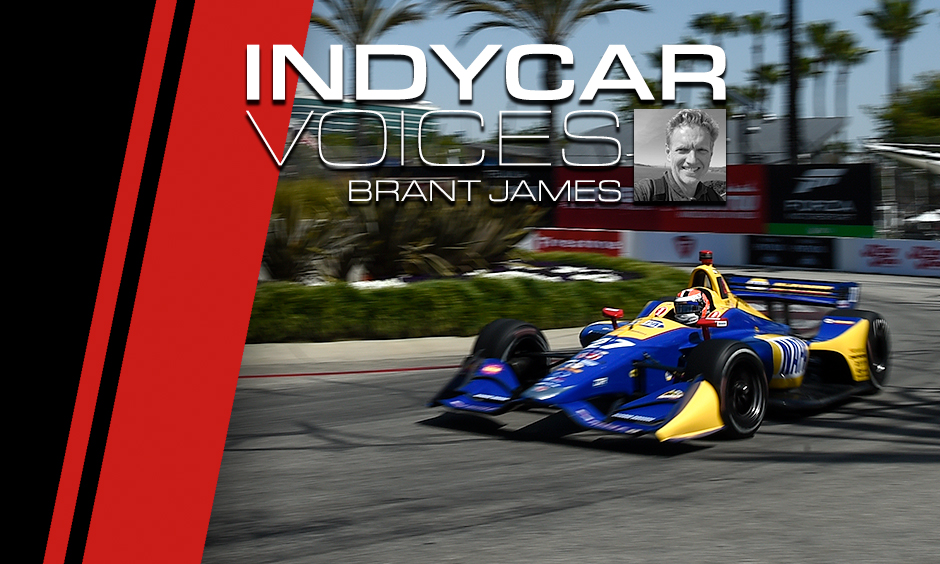INDYCAR is more than just the Month of May
MAY 03, 2018
There are two months on the calendar for those whose sporting affections and livelihoods are underpinned by the Indianapolis 500: May and not May.
It’s an understandable relationship with time and how it affects the personal happiness of its devotees, given that the race has served as the backdrop for generations of Indiana natives and further-flung Midwesterners at heart since the first 40 dreamers rumbled down the yard of bricks toward that first absurdly curved first turn in 1911. Most all of them have a yarn about the first time they heard Tom Carnegie announce a new track record, where their uncle was sitting when Danny Sullivan spun and won, the cases of beer they finished off in ‘94 or what happened that afternoon in the Snake Pit.
Welcome to May. Enjoy this. But do so cognizant that the same sort of devotion and passion radiating currently from Indianapolis Motor Speedway must bathe the two months of the schedule that come before and the four that come after.
Fifty laps south of the Speedway, in Louisville, Kentucky, a similar ritual will unfurl for the 144th time in the Kentucky Derby, the Indianapolis 500’s predecessor as the race that truly mattered most in terms of relevance and allegiance on the American sporting landscape. It is a treasure and an event that should be experienced in person by any sports fan, but its two minutes of glory has long since existed in a vacuum of ambivalence for mainstream sports fans. It is a cautionary tale about becoming a beloved anachronism or a vibrant survivor, as horse racing is an afterthought to most following the Derby or any potential Triple Crown bid. INDYCAR doesn’t aspire to that, and shouldn’t. Increasingly, it as an industry seems empowered to do something about it. There is optimism in the spring air.
Open wheel racing must fight hard for its place in not only the pantheon of May, but of the 12-month calendar. As certainly as the Derby, a tether to the nation’s agrarian past, once gave way to the grunt of the automobile and the lure of the Marmon Wasp, open wheel racing must continue to gouge and jostle for its place in a society where car culture has ceded its youth niche to tech and where rival racing series as well as a litany of other sports vies for the attention of fickle ticket-buyers and television consumers.
This is not to suggest that the denizens of open wheel racing should not be enthralled to welcome May and the prospect of the 500 on Memorial Day weekend. With much of the open wheel community centered or at least in some way buoyed permanently in Indianapolis, with much of its traditional fanbase Midwestern, the race represents more than bricks and “(Back Home Again In) Indiana.” For drivers it represents a chance for a king-making victory that not only means the most to any North American open wheel driver, but among the most to those who only dream of it from afar, like two-time Formula One champion Fernando Alonso until he made his maiden attempt last spring. It helped mint legends like A.J. Foyt, who won it a record-tying four times, and bedeviled legends like Mario Andretti, who captured it just once. It brings Helio Castroneves back this spring after being moved from IndyCar to Team Penske’s sports car team as he attempts to tie Foyt, Rick Mears and Al Unser for most wins in the race. It brought Danica Patrick back to bid farewell to a racing career who mainstream momentum began there in her rookie season in 2005. It introduced Alexander Rossi as a future championship threat in 2016. It stands as the next undone thing for defending series champion Josef Newgarden and 2016 victor Simon Pagenaud.
Most of the 33 drivers who will take the green flag on May 27 will then be off to tracks like Belle Isle, Texas Motor Speedway, Pocono Raceway, and that matters, too.
This is not to suggest that INDYCAR and its drivers do not sufficiently value or toil to promote or cherish a diverse schedule that includes street and road course races in the sunny climes of Florida and California, ovals in the desert and within minutes of the Gateway Arch. And that Indianapolis remains the focal point of their season is not only understandable but natural. It is the elder and the touchstone.
But the countdown clock to the Indianapolis 500 should show an infinity symbol. Part of the prerogative of May is to enhance it as much as cherish it, and that can only be accomplished but buttressing every other month around it. IndyCar’s task should made more simple, albeit not easier, in that it appears to be making at least incremental gains. A new television deal beginning next season with NBC Sports augments that reality, as does the involvement of new sponsors. A new title sponsor willing and able to leverage its reach would go even farther. The series, as team owner Chip Ganassi notes, has a good product. And at a fortuitous time. Now, he said, the industry needs to be “out there selling, selling all of the time.”
There is no better time than May.
















